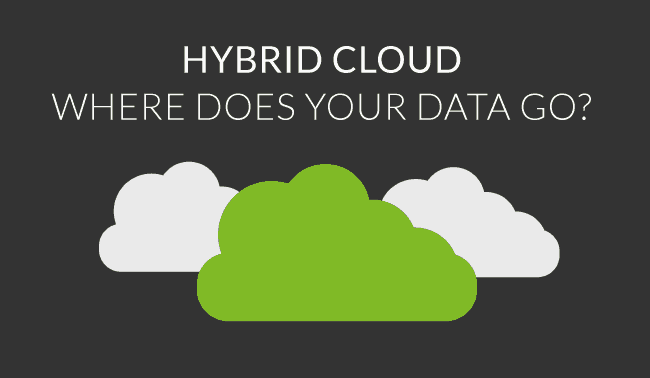I wandered lonely as a hybrid Cloud, Wordsworth might have mused. But he would have been mistaken, as the hybrid Cloud has two close companions, the public and private Clouds. Nevertheless, hybrid Cloud is an evocative expression to conjure with, and the IT sector is a sector of accidental poetry; no one intended for code to be beautiful, but seen from the right angle it can have the same elegance as a line of Tennyson’s. It’s a world that’s based on metaphors (virus, streaming, link, search engine, ping, window…etc) that help people to understand the effects of zeroes and ones endlessly combining and recombining to create the digital spaces we now inhabit.
What is the Cloud?
The Cloud is a metaphor for multiple-floors of rows upon rows of banks upon banks of industrially air-conditioned servers housed inside enormous and anonymous data centers located in suburban industrial parks or impersonal office districts. Nothing very poetic about that, but it begs the question: Why the choice of ‘Cloud’ as a metaphor? “Data” in this metaphor is water, the element that nourishes our digital lives.
Still, we’re not here to talk about our confusing IT metaphors. The humdrum everyday reality is that the mind-boggling quantities of data we are producing every second of every minute of every day require more and more capacious servers on which to be stored, so that application and service processes can be executed more quickly, saving us time and latency. The Cloud is accessible from anywhere with an Internet connection, allowing you to transfer or locate data at any moment.
Processing refers to improving a device’s resources, giving access to online programs without the need to install any software on your own hardware. For example smart phones, from which millions of images are uploaded to the Cloud every day, keeping the devices free of cumbersome data such as photos or videos, and giving users immediate access to their material.
What is the public Cloud?
A Cloud service open to the general public, and defined as such to differentiate it from the private Cloud, which is a later development. It’s the basic version of the Cloud, hosted by a third-party provider. Usually free-of-charge, and currently used by a long list of companies. The downside of this model is, what happens if your provider leaves the market, or decides to start charging for their services. What happens to your data then?
And the private Cloud?
Exclusive to the company, organization or business that makes use of it, being composed of external or internal services, and always administered by the entity itself. It’s a more expensive option, but your data is more secure. The contra on this side of the equation is, of course, the cost, and also the danger that the provider can also exit the market for whatever reason.
The solution to these possible situations is the hybrid Cloud.
So, what is the hybrid Cloud?
A combination of the best of both models described above, maintaining both internal and external providers. On one hand, it provides the same services as the public cloud, while on the other being essentially a private, and more secure, Cloud model, giving you the best of both worlds; the security of the private Cloud, the ability to share work loads among teams or individuals, more data implementation, and more flexibility, plus the power to migrate between the two models as necessary.
The drawbacks of hybridity? That the infrastructure presents an added layer of complexity. Private Cloud work loads have to be able to interact with the public Cloud, leading to questions of compatibility and connectivity, with the added requirement of a solid network on which to run. So, where is my data going?
Because it’s not literally a cloud, right? Ideally, critical services and sensitive data should be stored on the private Cloud, for maximum security, while non-essential services and less compromising data, (back-ups, etc) can safely be garrisoned on the public version.
What is the future for the Cloud?
An increase in the use of hybrid Cloud platforms and a consequent increase in the need for good monitoring practices to keep abreast of this exciting, innovative but potentially insecure data depository system.
Pandora FMS’s editorial team is made up of a group of writers and IT professionals with one thing in common: their passion for computer system monitoring. Pandora FMS’s editorial team is made up of a group of writers and IT professionals with one thing in common: their passion for computer system monitoring.


















